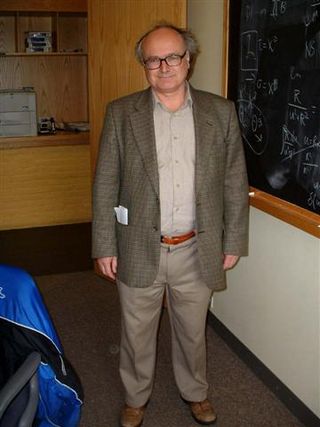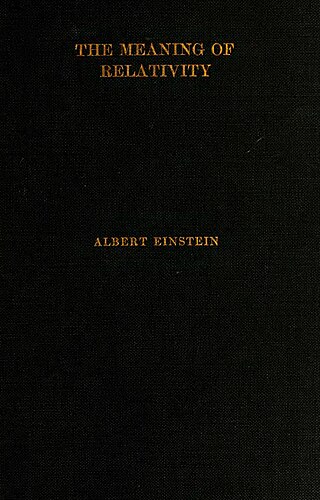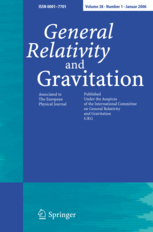
The theory of relativity usually encompasses two interrelated physics theories by Albert Einstein: special relativity and general relativity, proposed and published in 1905 and 1915, respectively. Special relativity applies to all physical phenomena in the absence of gravity. General relativity explains the law of gravitation and its relation to the forces of nature. It applies to the cosmological and astrophysical realm, including astronomy.

Kip Stephen Thorne is an American theoretical physicist known for his contributions in gravitational physics and astrophysics.

Anti-gravity is a hypothetical phenomenon of creating a place or object that is free from the force of gravity. It does not refer to either the lack of weight under gravity experienced in free fall or orbit, or to balancing the force of gravity with some other force, such as electromagnetism and aerodynamic lift. Anti-gravity is a recurring concept in science fiction. Examples are the gravity blocking substance "Cavorite" in H. G. Wells's The First Men in the Moon and the Spindizzy machines in James Blish's Cities in Flight.

The Max Planck Institute for Gravitational Physics is a Max Planck Institute whose research is aimed at investigating Einstein's theory of relativity and beyond: Mathematics, quantum gravity, astrophysical relativity, and gravitational-wave astronomy. The institute was founded in 1995 and is located in the Potsdam Science Park in Golm, Potsdam and in Hannover where it closely collaborates with the Leibniz University Hannover. Both the Potsdam and the Hannover parts of the institute are organized in three research departments and host a number of independent research groups.
Clifford Martin Will is a Canadian-born theoretical physicist noted for his contributions to general relativity.

Gary William Gibbons is a British theoretical physicist.

Robert M. Wald is an American theoretical physicist and professor at the University of Chicago. He studies general relativity, black holes, and quantum gravity and has written textbooks on these subjects.

Thanu Padmanabhan was an Indian theoretical physicist and cosmologist whose research spanned a wide variety of topics in gravitation, structure formation in the universe and quantum gravity. He published nearly 300 papers and reviews in international journals and ten books in these areas. He made several contributions related to the analysis and modelling of dark energy in the universe and the interpretation of gravity as an emergent phenomenon. He was a Distinguished Professor at the Inter-University Centre for Astronomy and Astrophysics (IUCAA) at Pune, India.
Foundations of Physics is a monthly journal "devoted to the conceptual bases and fundamental theories of modern physics and cosmology, emphasizing the logical, methodological, and philosophical premises of modern physical theories and procedures". The journal publishes results and observations based on fundamental questions from all fields of physics, including: quantum mechanics, quantum field theory, special relativity, general relativity, string theory, M-theory, cosmology, thermodynamics, statistical physics, and quantum gravity

General Relativity is a graduate textbook and reference on Albert Einstein's general theory of relativity written by the gravitational physicist Robert Wald.

The International Journal of Theoretical Physics is a peer-reviewed scientific journal of physics published by Springer Science+Business Media since 1968. According to the Journal Citation Reports, the journal has a June 2023 real-time impact factor of 2.6 and publishes both original research and review articles. The editor-in-chief is Andreas Wipf.

Classical and Quantum Gravity is a peer-reviewed journal that covers all aspects of gravitational physics and the theory of spacetime. Its scope includes:

Jürgen Ehlers was a German physicist who contributed to the understanding of Albert Einstein's theory of general relativity. From graduate and postgraduate work in Pascual Jordan's relativity research group at Hamburg University, he held various posts as a lecturer and, later, as a professor before joining the Max Planck Institute for Astrophysics in Munich as a director. In 1995, he became the founding director of the newly created Max Planck Institute for Gravitational Physics in Potsdam, Germany.
American interest in "gravity control propulsion research" intensified during the early 1950s. Literature from that period used the terms anti-gravity, anti-gravitation, baricentric, counterbary, electrogravitics (eGrav), G-projects, gravitics, gravity control, and gravity propulsion. Their publicized goals were to discover and develop technologies and theories for the manipulation of gravity or gravity-like fields for propulsion. Although general relativity theory appeared to prohibit anti-gravity propulsion, several programs were funded to develop it through gravitation research from 1955 to 1974. The names of many contributors to general relativity and those of the golden age of general relativity have appeared among documents about the institutions that had served as the theoretical research components of those programs. Since its emergence in the 1950s, the existence of the related gravity control propulsion research has not been a subject of controversy for aerospace writers, critics, and conspiracy theory advocates alike, but their rationale, effectiveness, and longevity have been the objects of contested views.
Algorithmica is a monthly peer-reviewed scientific journal focusing on research and the application of computer science algorithms. The journal was established in 1986 and is published by Springer Science+Business Media. The editor in chief is Mohammad Hajiaghayi. Subject coverage includes sorting, searching, data structures, computational geometry, and linear programming, VLSI, distributed computing, parallel processing, computer aided design, robotics, graphics, data base design, and software tools.
The International Journal of Modern Physics is a series of Physics journals published by World Scientific.

Prahalad Chunnilal Vaidya, was an Indian physicist and mathematician, renowned for his instrumental work in the general theory of relativity. Apart from his scientific career, he was also an educationist and a follower of Gandhian philosophy in post-independence India, specifically in his domicile state Gujarat.

Ivor Robinson was a British-American mathematical physicist, born and educated in England, noted for his important contributions to the theory of relativity. He was a principal organizer of the Texas Symposium on Relativistic Astrophysics.

The Meaning of Relativity: Four Lectures Delivered at Princeton University, May 1921 is a book published by Princeton University Press in 1922 that compiled the 1921 Stafford Little Lectures at Princeton University, given by Albert Einstein. The lectures were translated into English by Edwin Plimpton Adams. The lectures and the subsequent book were Einstein's last attempt to provide a comprehensive overview of his theory of relativity and is his only book that provides an accessible overview of the physics and mathematics of general relativity. Einstein explained his goal in the preface of the book's German edition by stating he "wanted to summarize the principal thoughts and mathematical methods of relativity theory" and that his "principal aim was to let the fundamentals in the entire train of thought of the theory emerge clearly". Among other reviews, the lectures were the subject of the 2017 book The Formative Years of Relativity: The History and Meaning of Einstein's Princeton Lectures by Hanoch Gutfreund and Jürgen Renn.

Mustapha Ishak-Boushaki is a theoretical physicist, cosmologist and professor at the University of Texas at Dallas. He is known for his contributions to the studies of cosmic acceleration and dark energy, gravitational lensing, and testing alternatives to general relativity; as well as his authorship of Testing General Relativity in Cosmology, a review article published in Living Reviews in Relativity. He was elected as a fellow of the American Association for the Advancement of Science (AAAS) in 2021 and as a fellow of the American Physical Society (APS) with the quote: "For distinguished contributions to the field of theoretical cosmology, particularly for testing modifications to general relativity at cosmological scales, and for sustained excellence in teaching and mentoring of students."















